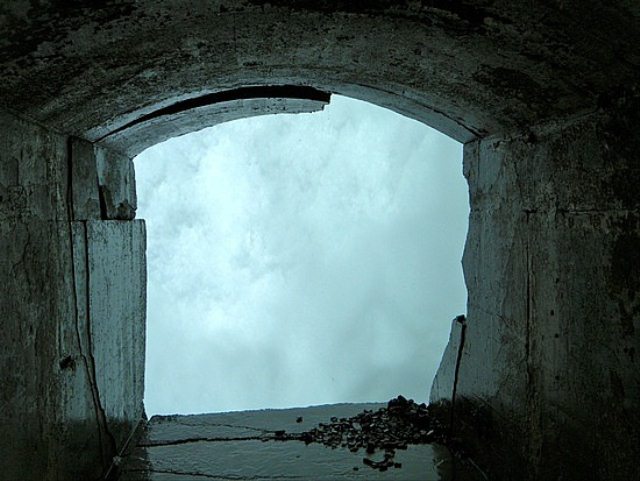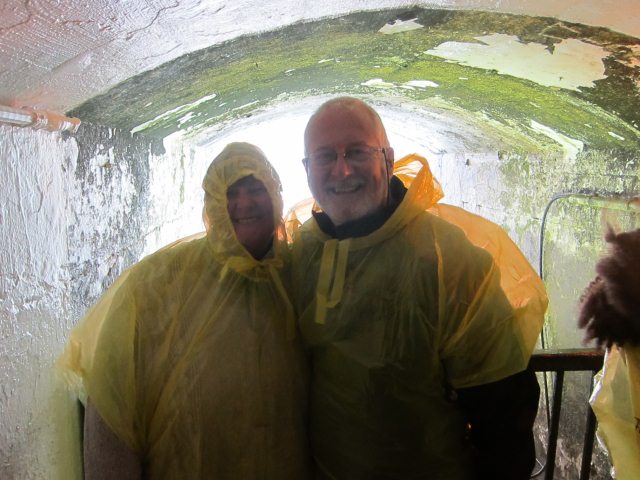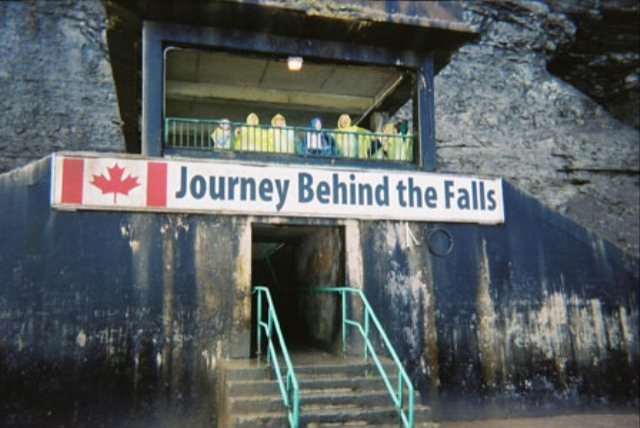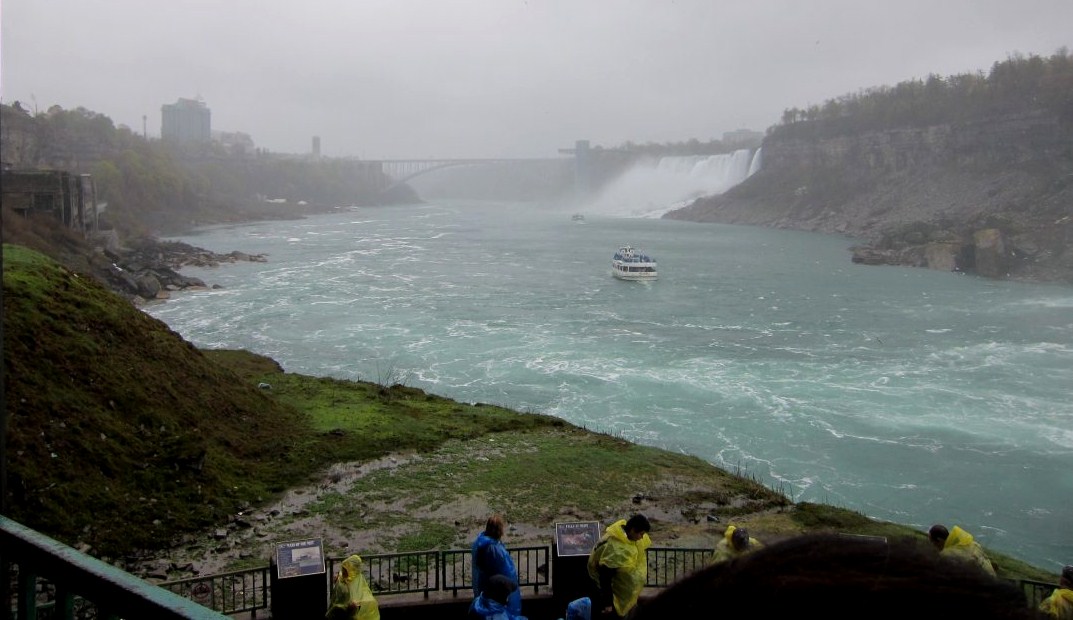Behind the Falls

|
Journey
Behind the Falls
  After a couple of stops to take photographs Stan, our bus driver took us to Table Rock, for a fast-track (no queuing) ride down the elevator to the tunnels below. After trotting along the cold, drafty and slippery tunnel, we followed a shorter one to an open portal behind the falls themselves. The noise gave some idea of the power of the water falling behind us in the picture. Every so often it was if the tunnel took a breath and we were sprayed by fine, freezing cold mist alternating with a good rain soaking.
 
History:
For over 400 years people have traveled from around the globe to experience the
spectacle of Niagara, one of the world’s most impressive waterfalls. In
early times, the only way to get up close to the Falls was to climb down the
steep bank and over huge boulders, or down crude “ladders” created from fallen
trees. The
first enclosed stairs were built in 1818 and a spiral staircase was constructed
in 1832 for visitors to enter what was then called the “Sheet of Falling
Water” attraction. The admission fee was $1, and for an additional dollar,
certificates were presented to those who had completed the trip behind the
Falls. In 1885, The Niagara Parks Commission was created to maintain the area around the Falls. In 1887, the Commissioners removed the staircase and installed a water hydraulic powered elevator. The lift held 8 to 10 visitors with their guides and took almost a minute to make the up or down trip. The first tunnels were built in 1889. Visitors were taken through the tunnel by guides carrying lanterns.

In
1902, the hydraulic lift was taken over by the Ontario Power Company when they
began construction of the Ontario Power House. This plant is now decommissioned,
but still sits at the river’s edge below the Falls. In exchange for using the
hydraulic elevator, the Ontario Power Company agreed to sink a shaft through the
rock and construct an electric elevator and a new “scenic tunnel”. In
1925, work began on a new Table Rock House. In the new building, the
elevator to the "Scenic Tunnels" attraction was twinned and dressing rooms were
built for visitors to get ready with heavy rubber rain coats and
boots. As the brink of the Falls receded, tunnel extensions were made as required, until 1944 when a new tunnel was cut into the rock about 18 meters behind the original one. These tunnels were lined with concrete and lit by electricity and are the tunnels still used today.
 
In 1951, an observation plaza was added and in 1990, the raincoats and boots were discontinued, replaced by light biodegradable rain ponchos which may be kept as a souvenir. In 1994, the name of the Scenic Tunnels was changed to Journey Behind the Falls. The observation platform gave us great views of Horseshoe Falls and down toward the American Falls, not long to take photographs as the wind and wet air was truly freezing, but long enough to take photos of each other.
   
ALL IN ALL AN OPPORTUNITY TO GET UP CLOSE AND FEEL TINY
THUNDEROUS POWER AND NOISE
|

